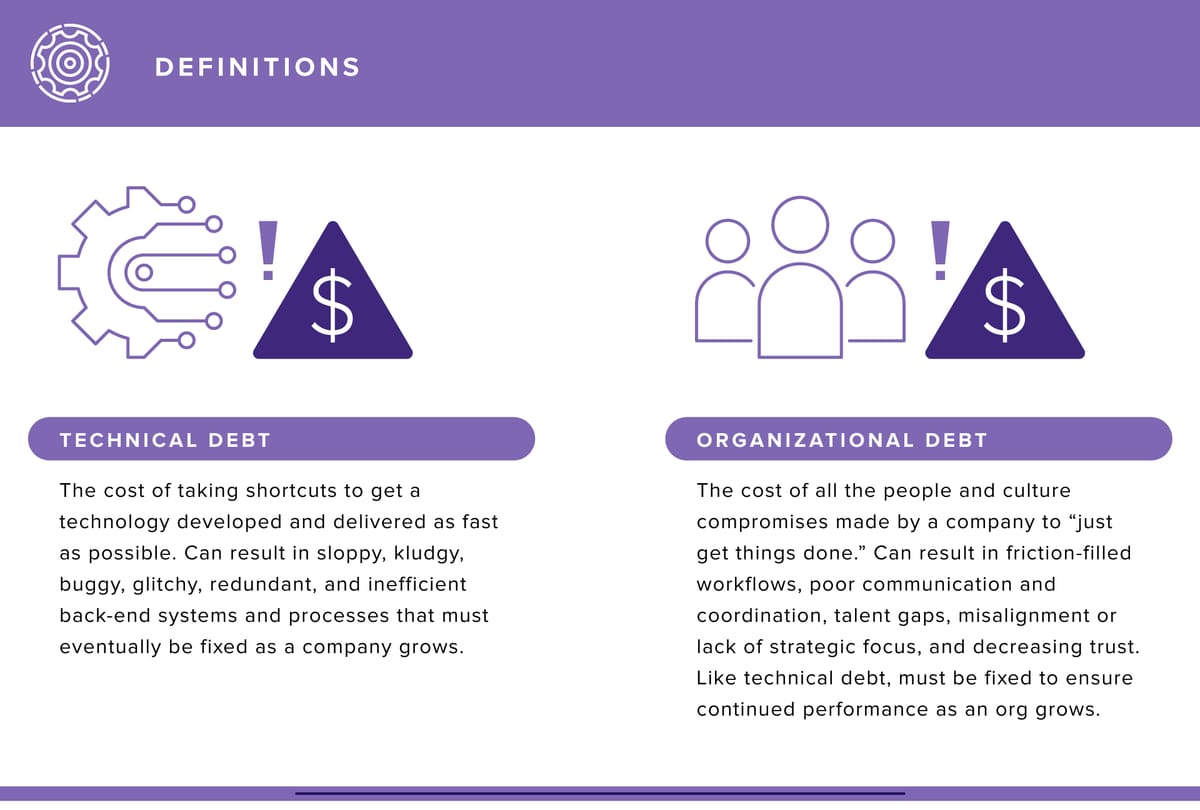At some point in your professional life, you have likely realized that your job is preventing you from doing your job.
That’s the first line of Friction: A Manifesto, published by Filene in June 2020. Based on research by Hayagreeva “Huggy” Rao and Bob Sutton—both professors at Stanford’s Graduate School of Business—Filene’s friction manifesto highlights the role of friction in shaping how things get done in the world of work.
Reading the friction manifesto, you will no doubt recognize the signs and symptoms of organizational friction as it generates frustration and fatigue, wastes time and attention, drives up distrust and disengagement, creates inefficiencies, and ultimately exhausts an organization’s most valuable resource: its people.
I spent the first week in March at GAC, and many of my conversations with credit union leaders focused on enhancing strategic execution in an uncertain and frankly challenging operating environment, driving efficiency and productivity, and unlocking the value of data, technology, and partnerships. (We also discussed this focus in a previous Thinking Forward post.) Strategic execution is, of course, hampered by organizational friction—although as Huggy and Bob point out, in some cases, friction may be exactly what’s needed to slow things down and ensure that the right things are done well.
Luckily for us, almost four years after the publication of Filene’s friction manifesto, Huggy’s and Bob’s research on friction has resulted in a new book: The Friction Project: How Smart Leaders Make the Right Things Easier and the Wrong Things Harder.
The most compelling part of The Friction Project is how immediately recognizable and emotionally resonant the book’s descriptions of organizational friction are. Huggy and Bob document a voluminous menagerie of friction-causing characters and experiences: thousand-word emails and useless meetings (which spawn other meetings to prepare for the useless meetings), fad-surfing bosses and petty tyrants, “jargon monoxide” that confuses, gatekeeping bureaucratic procedures designed to discourage, antiquated technologies and needlessly complex workflows, missed handoffs and poor coordination, and much more.
Reading The Friction Project might be cathartic, but the book is much more than a compendium of workplace complaints. It’s—much more importantly—a diagnostic manual for identifying sources of fiction, an archive of tactics to eliminate friction where it’s destructive (and insert it where it might be helpful), and a guide for the personal and professional growth of leaders looking to drive focus and help make the jobs of the people with whom they work easier and better.
I sat down with Huggy to talk about his new book and what it means for credit unions.
Taylor Nelms (TN): Huggy, you sent me a pre-publication version of your new book back in the fall of last year. I read it front to back in one sitting—just devoured it—and for credit unions that are looking to become more efficient, more productive, and more innovative, I see a range of powerful lessons. But before we dive into the details of the argument and implications for credit union leaders, maybe you can tell me, why this book, and why now?
Huggy Rao (HR): Thank you, Taylor! Yes, why did we even write the book? Earlier, Bob and I had written a book called Scaling Up Excellence.
TN: About how to identify what’s working well in an organization and then spread those ideas and ways of working across the organization as it grows.
HR: Right. Those lessons were very well received by senior leaders. But as we spoke with people lower in the organization, at the middle and junior rungs of management especially, what we heard was a lament that it is very hard to get anything done. Let me give you a few examples.
I asked one executive, “Where do you work?”—a very straightforward question. And the guy looks at me and says, “Professor, I work in a frustration factory.” How does a person go to work in a frustration factory and then get up and do it again, every day?
Another woman, whom I’ll never forget, told me with a tear in her eye and a quiver in her voice, “I do too much inconsequential work, and it takes a toll on me. When I go home, all I’ve got left are the scraps of myself for me and my family.” I’ve got to tell you Taylor, that was a blow to the solar plexus.
And this is a very universal phenomenon. Many leaders do not realize how time poor their employees are. Most leaders do not understand the sleep debt their employees have. We knew that we needed to understand what was going on. Thus began our adventure in friction land.
Many leaders do not realize how time poor their employees are. Most leaders do not understand the sleep debt their employees have. We knew that we needed to understand what was going on. Thus began our adventure in friction land.
TN: So, your and Bob’s intuition was that at the core of these shared experiences—that sense of frustration, aggravation, devaluation, and exhaustion—was a shared cause.
HR: Yes, when we went into this project, we were concerned about the obstacles that infuriate, enrage, and overwhelm people at work. In physics, friction is simply the obstacles that prevent movement.
TN: In physics, too, friction produces heat as a byproduct, and so we might think about the heat of organizational friction as the emotional impact friction has on people.
HR: Well, as we were researching friction in organizations, we found that there are also obstacles that slow people down in productive or helpful ways. What we realized is that friction is kind of like the bacteria in our guts. We’ve got good and bad bacteria. Similarly, you’ve got good friction and bad friction. What’s the problem with bad friction? When you have obstacles that infuriate, enrage, and overwhelm people, it’s very hard for them to recruit a curious and generous version of themselves. Curiosity and generosity both require willpower. They are not automatic; they require effort. And friction saps willpower and makes everything harder.
TN: You have many amazing stories in the book about how bad friction shows up in organizations. Can you give me an example?
HR: Absolutely. We already talked about the invisible problem of time poverty. Why is time poverty invisible? Because leaders don’t usually suffer from time poverty in the same way. Why? Because leaders’ time is protected! Leaders are protected from many of the inconveniences that their employees deal with every day.
So, you have time poverty on the one hand, and this collides with another very common problem, a very human tendency that has received relatively little attention: addition bias. When faced with decisions or problems, people add. We default to asking about what we can add rather than what can we subtract. There’s an article in Nature that reported on twenty different studies, and it didn’t matter what task you gave people—build a Lego model, modify a recipe, plan a vacation—everyone defaults to adding something. In a task that had to do with university reform, 89% of the suggestions had to do with addition; only 11% had to do with subtraction.
You have very little time, and then you have this addition sickness. What’s the result? A tsunami of obstacles. And when you’re hit with this kind of tsunami, there’s no way you can tap into your willpower to be curious and generous, to think through things carefully, to stay engaged and productive.
You have very little time, and then you have this addition sickness. What’s the result? A tsunami of obstacles. And when you’re hit with this kind of tsunami, there’s no way you can tap into your willpower to be curious and generous, to think through things carefully, to stay engaged and productive.
TN: I think your descriptions of the effects of bad friction are very evocative, and I would bet almost everyone will find them very familiar. The more important question is, of course, what can we do about it?
HR: Taking care of bad friction is like mowing the lawn. You have to mow the lawn regularly. Because if you don’t mow the lawn, the weeds are going to outstrip any sapling you want to plant. You can mow the lawn in a variety of ways, and we write about many in the book. Probably the most famous is Dropbox’s “Armeetingeddon,” when leaders cancelled all team meetings for two weeks and then asked employees to consider carefully the need for each meeting before adding it back to the calendar. But here’s another example, from a physician in Hawai'i named Melinda Ashton. What did she do? She was very dissatisfied with Hawai'i Pacific Health’s electronic records system. So were lots of the people she worked with, the doctors and nurses and caregivers. They decided to get rid of the stupid stuff that was bogging everyone down. That was the name of her campaign: “Get Rid of Stupid Stuff.” Look at how beautiful that is? A ten-year-old kid would get that. No jargon, no confusion. Just get rid of stupid stuff.
They asked all the healthcare system employees to report anything they thought was badly designed, not needed, or “just plain stupid.” They got 188 suggestions, and they implemented 87 of those ideas. One of the ideas they implemented ended up eliminating one mouse click per nurse during patient rounds. We don’t need to go through all the math, but just think how this adds up: all the nurses, all the patients, and eliminating that one click led to saving 1,700 nurse hours every month!
The important thing about this example from Hawai'i is that they had a campaign. They were purposeful. You’ve got to do this regularly.
TN: What about good friction? You mentioned earlier that you and Bob started with a focus on the negative impacts of organizational friction, but you learned that in some cases, adding friction produced positive outcomes. How can you tell when friction will be good and when it will be bad?
HR: Ultimately, the goal is to make the right things easier to do and the wrong things harder to do. So it depends. There will be trade-offs. But hopefully eliminating bad friction helps to clear the way to focus on the stuff might be naturally more complex, or take more time, or deserve more attention.
One place where you want to introduce friction is to prevent the wrong things from happening. This reminds me of an experience with a bank that wanted to deepen their relationship with customers. They decided they wanted to sell eight products to each customer. The leaders of the bank asked me, “What do you think?” I told them, one way to find out if this is feasible is to go to the poorest performing branch and ask them, “Can you hit this target?” And the employees at that branch very confidently said, “Yes!” I was surprised. I asked them, “How do you propose to do this? Why are you so confident?” And one of the guys looks at me and says, “It’s very simple. You don’t need eight signatures to sell eight things. You only need one signature. And the best targets are people over the age of 65.” Well, can you imagine the response? The bank immediately decided to put more friction into the sales process. Anyone trying to sell anything to someone aged 65 or above needs to get their boss’ approval. Otherwise, what are the branch staff going to do? They’ll do anything they can to hit the target.
Where else can friction be constructive rather than destructive? You want to add friction when making high-stakes, difficult-to-reverse decisions. You may need to add friction when doing creative or complex work, to ensure that the time is taken to do that work well. Going fast can end up incentivizing sloppiness. And finally, you want to add friction to build commitment. For example, think about the way Navy SEALS are selected: There is enormous friction in the process, but the idea is to build commitment. This is called “effort justification.” Labor leads to love—the more you put into something, the more you value it.
Knowing what to add, when to slow down, where complexity is useful, and what to make impossible is as important as knowing what to subtract, when to go faster, and what to make easier.
TN: Huggy, you and Bob have been researching organizational friction now for seven years, at least. And credit unions played an important role in this research, right?
HR: If you remember, we ran a workshop on friction for one of the first research events for the Center of Excellence for Performance and Operational Excellence. In financial services, often the focus is on making things as frictionless as possible for consumers. We were just beginning our research, and it was eye-opening for us to see how credit union leaders identified areas of friction for employees and for members, and how they saw the need not only to take friction out but also sometimes to put it back in.
TN: Yes! This was back in 2018, and it was at this event that you and Bob proposed organizing a “Friction Olympics” for credit unions. Credit union leaders today might see a renewed need for a Friction Olympics. Many credit unions are focused right now on operational efficiency and productivity, getting value out of technology and partnerships, better communication and alignment, and balancing the need for execution today with exploration for tomorrow. Where have you seen friction appear most commonly in credit unions? Where should credit union leaders pay attention to spot bad friction as it appears?
HR: One area for credit union leaders to look at is the entire digitization process. When you’re going digital, it doesn’t mean you just convert manual to digital or that you throw all the paper away. It requires a different approach. And importantly for us, digital transformation is a great chance for you to mow the lawn. I have my questions, honestly, as to how many leaders are using this as an opportunity to tackle bad friction and mow the lawn, and how many are rushing headlong into digitization without taking advantage of that opportunity and without considering the potential consequences of moving too fast.
TN: What you’re talking about here is twofold. Not only is digital transformation a moment maybe to remove friction where it appears, internally or externally. It’s also an opportunity to insert friction, to pause and reevaluate your goals and align on what are the right things to make easier to do vs. harder to do.
HR: That’s right. There’s pressure to go digital as fast as possible. But we need to do it mindfully, thoughtfully. What do we want to keep? What do we want to remove?
TN: There’s a great story in the book about Uber. I think it originated as a case study for the Stanford Graduate School of Business. That story is all about the consequences of moving too fast, that it can produce not just technical debt but organizational debt, which you then have to pay down later.
HR: I am so glad you drew attention to this idea of organizational debt. We think it’s a big deal in companies. Uber grew very, very fast. They wanted to grow fast. They thought, we want to be a bunch of fast speedboats. It’s great to be that way when you’re small. But as you become larger, you need to be more like a flotilla. You can imagine what happened. Nine speedboats, nine code bases! As they grew, they were going to need to keep hiring people just to maintain all these different systems. And the consequences were serious for the people who worked there. I asked the Uber CTO, “How do you know there’s organizational debt in your company?” He said, “I just look at the sleep debt of my engineers. If they’re getting very little sleep, I know our organization is pretty inefficient.”
TN: That’s an example that is going to resonate with credit union leaders. Most credit unions also have multiple legacy technologies, legacy systems, that don’t always work well with one another and take a lot of people power to maintain.
HR: Another problem that Uber faced with growing too fast is that they did not have time to develop managers. Who became a manager? Any engineer who put up his or her hand and said, “Hey, I want to be a manager.” That person was made a manager. Now, immediately, what are the problems you’ve created? The first is that there are a lot of people who are not good managers supervising people, making management decisions, and so on. The second problem is, what do employees do when they have a bad manager? They leave the company. The inability to develop good managers led to increased turnover. This was an invisible problem, but if you calculated the cost of turnover, the cost of bad decisions, it was a non-trivial problem. Uber ended up paying a tax in the form of delays, inefficiencies, failures in product and in customer service. All of that means more expenditure.
Credit union leaders are understandably, and rightly, concerned about transforming their organizations to be competitive in this modern era. But one of the difficulties of organizational transformation, any kind of organizational transformation, is that it can become an exercise in asking people to do more, adding even more to their plate. I often wonder, wouldn’t it be nice if organizations began the transformation effort by giving people the gift of time? One way to minimize the impact of change is by giving people a time buffer to absorb it. What could credit unions do to give their people a gift of time? How might people reciprocate that gift?
TN: It’s a very relevant question for credit unions, many of which are going through a lot of change and so have a need for good change management strategies. In the book, you and Bob talk about the importance of having “friction fixers” in your organization. What does it mean to be a friction fixer?
HR: Yes, we see over and over again that great leaders are friction fixers. They take bad obstacles out, they put good obstacles in. To do that well, you have to see yourself as a trustee of other people’s time.
TN: I absolutely love that. It’s a great question for everyone to ask themselves: Are you being a good trustee of other people’s time?
HR: And their own time. Time is a precious resource. You don’t want to waste it. So that’s the first way to be a friction fixer. Secondly, you want to think of the organization itself as a product. The organization itself must be designed. To be good organizational designers, leaders should think of themselves in two ways. First, they should think of themselves as an editor, the editor of a newspaper or a movie. What do editors do? They prune away all the stuff that’s unnecessary, that distracts, bores, or infuriates. But at the same time, leaders also have to be like game designers. When you’re designing a game, you’ve got to make things a bit harder, too, to keep people engaged, learning, and committed. That is the friction project!
Now as a leader and a friction-fixer, your job, to be honest, is part organizational design and part therapy. You can begin the therapy process by helping people reframe what they do. Simply getting them to rethink what their jobs are can make a big difference. For example, for our book Scaling Up Excellence, we learned about a young woman at a pharmaceutical factory. She leads a team of ten men, and they make syringes. Every time they do a new production run, they have to do an equipment changeover. They were taking 14 hours! The equipment changeovers were seen as break time. So this young woman reframes this very deftly, and she tells the team, “You’ve got to do it like a pit stop.” The moment you say “pitstop,” everyone knows what to do. Speed matters, handoffs matter, everyone has their own job, all of that.
Or, another example, you could reframe customer service as being like a trail guide. We’re trying to write a case study about the California DMV. Stereotypically, the DMV is a place that is filled with friction. But in fact, the California DMV has improved enormously. When you go and stand in line, there’s someone who comes by with a clipboard. He asks what you’re there for and sends you to the right window, gives you the information you need to renew your registration, get tags, whatever your task is. That’s being a trail guide.
TN: It strikes me that in all of these examples, friction fixers are taking responsibility for tackling problems that would otherwise fall in between job descriptions. The problem is that organizations cannot sustainably rely on individual heroics to get the job done. How do you assign accountability for friction fixing?
HR: We argue in the book that friction fixing must be made everyone’s responsibility, that accountability must be shared so that making the right things easier and the wrong things harder do not become orphan problems. But leaders must lead by example. That’s why they must invest in organizational design and be trustees of other people’s time and give the gift of time. That is what great leaders do. They multiply curiosity with generosity.
TN: I can’t think of a better place to end than that. May we all multiply curiosity with generosity. Thank you Huggy for joining me and for sharing your wisdom, once again, with Filene and with credit union leaders.
— TN
Related Filene Resources

Friction: A Manifesto
Report
Workplace inefficiency, miscommunication and disengagement are often the result of organizational friction, and friction is the result of perverse incentives, misaligned rules and norms and a failure to value the work of maintaining shared organizational resources.

Scaling Up Excellence
Report
Spreading excellence is a key step toward effective scaling, and scaling is increasingly vital to credit unions’ sustainability and success. Using expert tips and concepts from Sutton and Rao’s book Scaling Up Excellence, this report approaches these ideas from a credit union perspective to provide actionable insights that leaders can begin using today.












